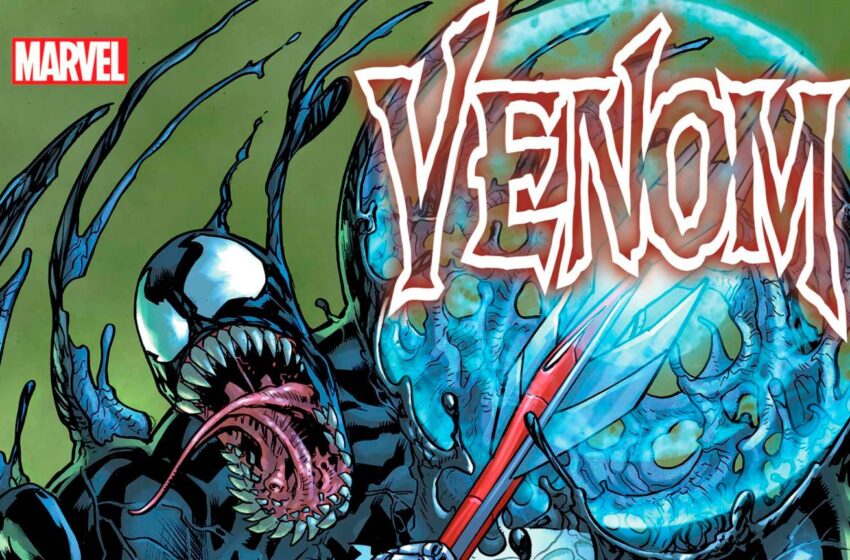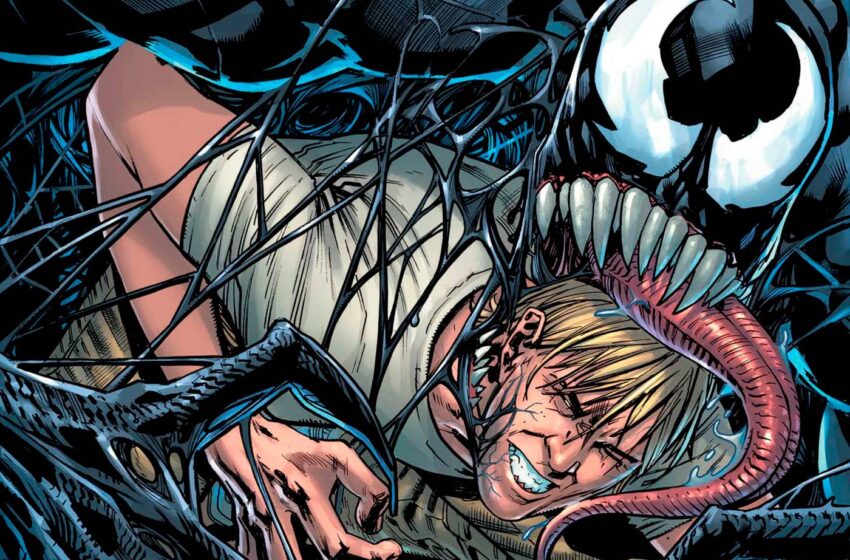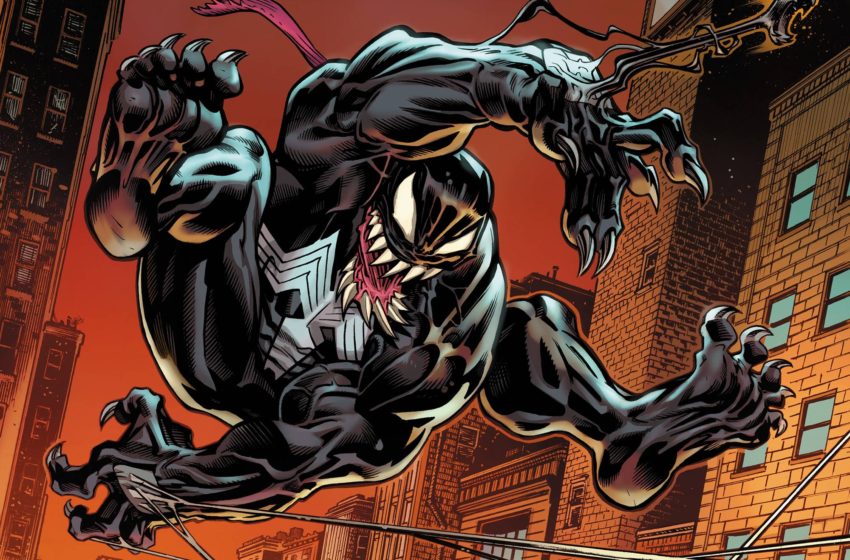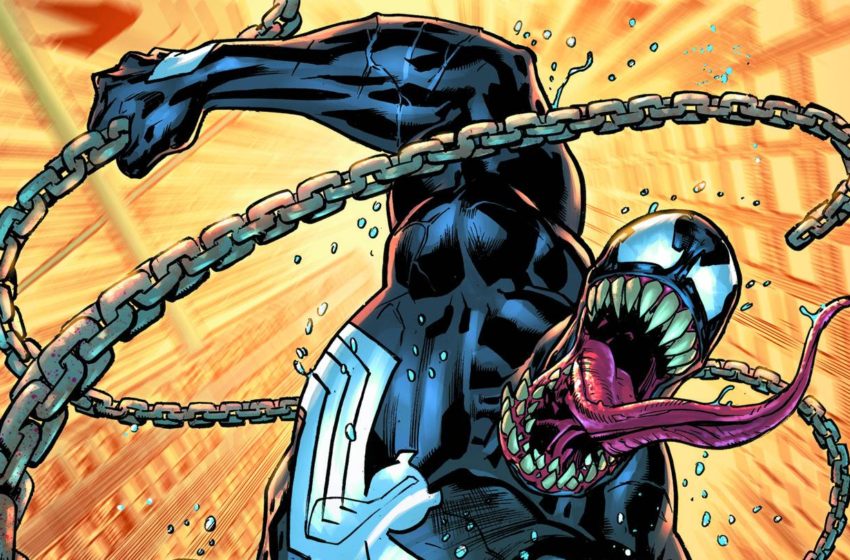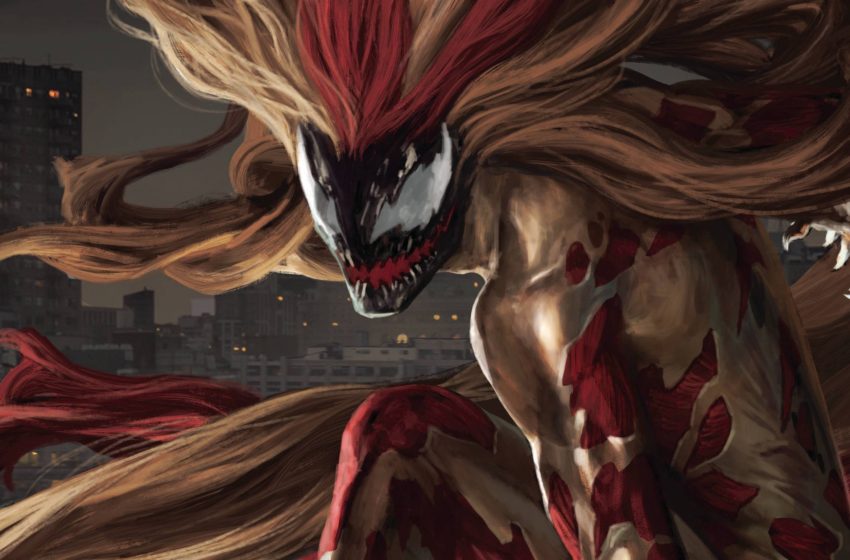“The villainous LIFE FOUNDATION is back – and they have DYLAN BROCK DEAD IN THEIR SIGHTS! Led once again by the insidious Carlton Drake, the symbiote-hunting organization has larger ambitions than ever before, and with ARTHUR KRANE in the palm of their hand, they finally have the political leverage to make them a reality in VENOM #4”
Written by Ram V, with art by Bryan Hitch, colors by Alex Sinclair, and letters by Clayton Cowles
Do You Really Want to Hurt Me?

Forrest: The opening of the issue is a protracted fight scene. The Venom Symbiote picks up on Sleeper and Dylan’s distress after their capture in the previous issue and heads out from its parking garage hideout (cool? Lame? We’ll let the kids decide) to help before it’s headed off by Arthur Krane sporting some Life Foundation technology, namely a nanomachine-laden spear, that evens the fight between the two. Venom makes a haphazard escape, and Carlton Drake remarks that what looked like their failure was actually their success, having provided enough stimuli for the Symbiote to “change.”
It’s perfunctory and a little stiff, especially so with Hitch’s uncompelling art, but it feels like actual plot momentum after stalling since the first issue, so I’m feeling a little more receptive than our last column.
Vishal: After the symbiote’s long (and IMO compelling) monologue in the last issue, it’s cool that it’s finally getting to do something. You’re right, this feels more plot-forward than the last couple of issues, and actually has momentum. It also has SHLORK sound effects as the symbiote rushes through Alchemax facilities to find Dylan, something that will always make me giggle. Thanks, Clayton Cowles!
I’m legitimately intrigued by this “change” for the symbiote – I question how it’ll fit into prior continuity, but Venom as a property has had its own continuity rewritten so often that it won’t bother me if we just decide to fully retcon it again. What intrigues me, though, is that very loudly proclaiming that you’re changing the symbiote only works if you’re going to take a wild swing with it. Cates did so, introducing Knull, the idea that the planet of symbiotes was a prison, the Grendel, and more – I want to see Ram V and Al Ewing take as big a swing at the mythos, and this is the closest we’re getting to a promise that it’ll happen.
Forrest: The question I have, still, is what exactly makes the Life Foundation think that what they’re doing will work. Don’t get me wrong, The Symbiote has certainly changed over time, but almost exclusively in conjunction with its host, not independently. There’s the implication that they know more than they’re letting on by issue’s end, but it seems nevertheless like they’re operating on a theory spoken as fact, and I’d like to know a little more about their findings to date, or even what their hypothesis is.
I want them to show their work. And I don’t just mean in-fiction but also structurally because it would make for a more interesting, less repetitive story.
Do You Really Want to Make Me Cry?

Forrest: The real meat of the book, then, is Dylan’s fleeting interaction with his supposedly deceased dad, who takes the form of an interesting kind of Symbiote amalgamation, maybe already hinting at the inexplicable changes its body is undergoing. It’s tense and a little sad, Dylan crying over the loss of his dad again, and renewing his resolve to wield Venom to fix things.
The character work is also hilariously downplayed by the following scene setting image:

My question for you, Vishal, is do you think the book knows this is as funny as it is? Is this supposed to be some kind of diegetic note about Eddie’s appearance? Is it supposed to be tongue-in-cheek? I’m amused, but also wary about this kind of tone undermining serious turns in the future, not something I would normally say for admittedly silly Venom stories but this comes close to crossing a line.
Vishal: Honestly, I don’t think it was supposed to be as funny as it was. And maybe this is more because the last few issues have eroded some of the trust I’d previously had in the writers of the book, because I know if this was in #1 I’d have assumed that this was intentionally goofy, but I really don’t think it was. That being said, if the story continues and we get more and more “dad reports” as Dylan stumbles into the remnants of his father, I will not complain.
Forrest: Either way, it certainly took the focus off the notable retcon that Dylan and Venom actually merged for the first time in the wake of Eddie’s death and not frequently since the end of Cates and Stegman’s run as would be implied. No chains, either! Just one of those necessities of an eponymously titled reboot, I guess.
Everything’s Not What You See, It’s Over Again

Forrest: Aaaaaaand returning to Life Foundation knowing more than they’re letting on, the book ends with Meridius, the mystery deity-like figure that acquired Eddie’s remains at the end of the first issue, instructing the Foundation to keep playing their part, as will he and Bedlam (surprise!), the red, demonic figure that first communicated with Eddie.
I didn’t necessarily expect Ram to be the one picking up these plot threads, and I still have some growing questions and concerns about how the co-writing structure will work with Ewing from here (are they trading entire arcs?) but the implication that they’re a little more tightly knitted than we first thought is actually reassuring to me. It’s not to its destination just yet but it does feel more like the plot is moving in a unified direction.
Vishal, do you think Meridius is the one that concocted the Life Foundation’s plot, or are they just middle management for an even bigger figure?
Vishal: Meridius has a fantastic design and is immediately striking, something that makes me want to believe they’re the primary antagonist here, but there’s a few things that make me unsure.
First of all, there’s the petty machinations of working with the Life Foundation – this rings far more like a middleman, as you said. I would expect that the primary antagonist wouldn’t work face to face with the humans in charge of the Life Foundation, that they’d operate using an agent, but I could be wrong.
Second of all, the connection to Bedlam implies that they’re potentially equals – and I can’t imagine that Bedlam is on the same playing field as the primary antagonist of this run. Maybe I’m relying too much on tropes here, but they’re kind of all I have to work with as Meridius has not appeared very much so far.
Lastly, there’s the Vaas precedent – Far Cry 3 created an iconic and immediately memorable antagonist, and (spoilers for Far Cry 3, if you care a decade later) killed him off to replace him with the real villain of the game, a forgettable nobody named Hoyt. I pray that Ewing and V have not created a Hoyt – it’d really put a damper on the run.
Forrest: Hm. Much to think. We’ll be back next time, folks!


